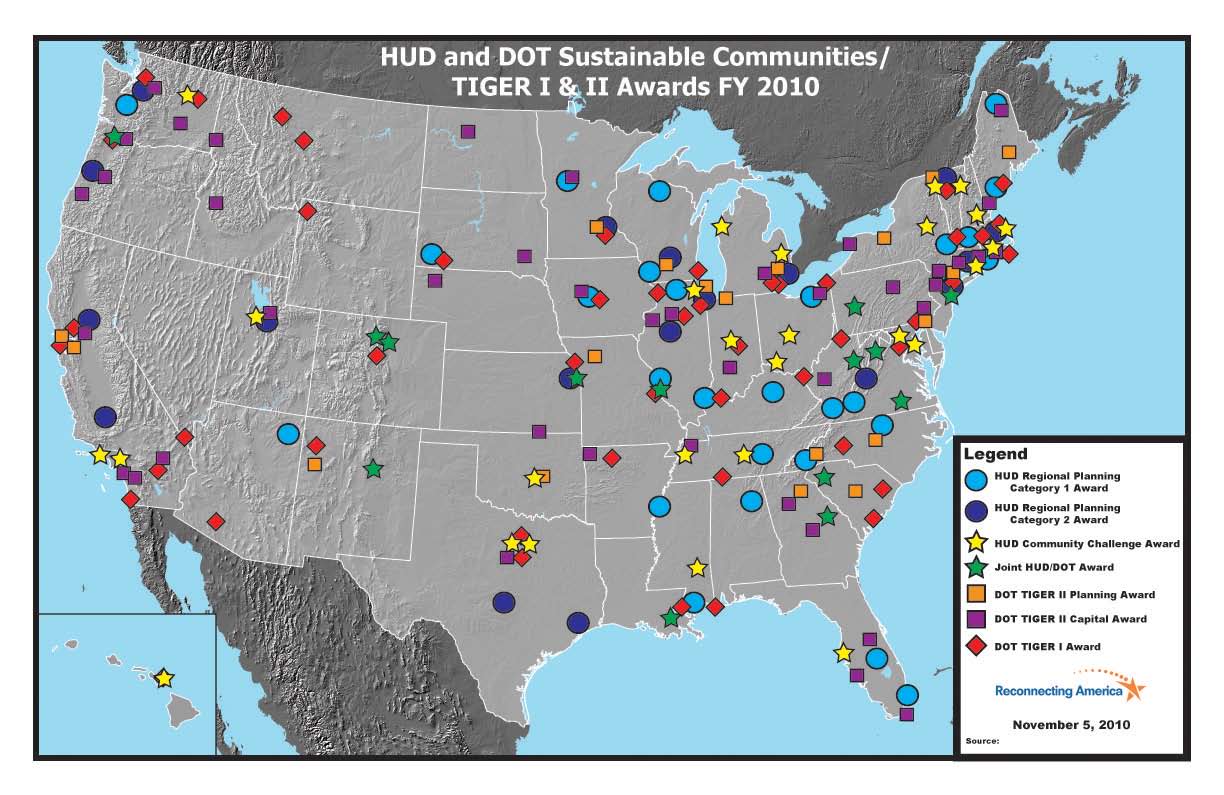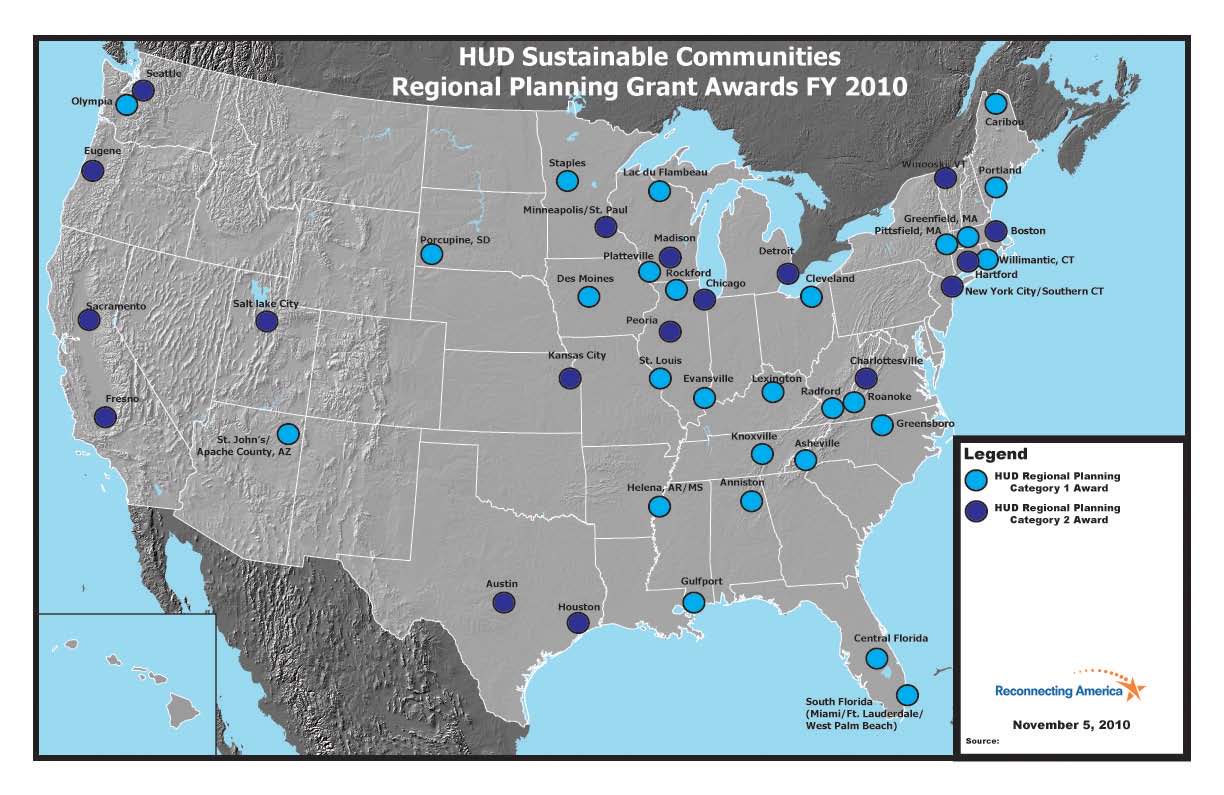RECONNECTING AMERICA
Introduction
The past few months have been an exciting time as large and small communities, representing all corners of the country, have worked on developing collaborative planning processes that will address the unique conditions in their region and which will improve the quality of life for the diverse people that live, work and play there.
The impetus for this has been competition for grants springing from the unprecedented partnership announced last year between the Department of Housing and Urban Development, the Department of Transportation and the Environmental Protection Agency.
In October, HUD and DOT announced the winners of the Sustainable Communities Regional Planning (SCRPG), Community Challenge, and TIGER II planning awards.
Reconnecting America staff has been busy reviewing successful and unsuccessful applications for innovative ideas, common themes and unique concepts. We have also compiled a list of winners of all the awards with descriptions of the proposed activities.
Our primary focus was on collecting applications for the SCRPG grants since we have been involved in many regional efforts to implement equitable transit-oriented development. Prior to the announcement of grant recipients we were able to obtain 47 SCRPG applications from across the country through web research and outreach to our contacts at various metropolitan planning organizations. Seventeen (17) of these regions received awards. There was an overwhelming focus on transit corridors and equitable housing development in many of these applications, especially among applications from regions with an existing plan and looking to implement that plan or fill gaps. The following paragraphs summarize our key findings of this analysis, starting with our overall findings, followed by a review of overlapping award regions, and finally a look at common themes and concepts among successful applicants.
Overall Findings
HUD and DOT issued approximately 107 grants for planning-related activities through both Sustainable Communities and TIGER II grants. Forty-five regions and 61 individual communities received planning grants. DOT also issued another 42 TIGER II grants for capital projects with this round of funding, in addition to its previous award of 51 TIGER I grants back in February 2010. Approximately 199 awards have been given to 132 regions through each of these programs. Public transportation and transit-oriented development are key concepts in an estimated 72 of the 199 awards (36.1%). This is broken down as follows:
- 26 Regional Planning grants (11 Category 1, 15 Category 2)
- 17 Community Challenge grants
- 10 Joint HUD/DOT Challenge/TIGER II grants
- 15 TIGER II grants (11 planning, 4 capital)
- 4 TIGER I grants
Regional Analysis
Approximately 59 of the 100 largest metropolitan statistical areas (MSAs) received some type of award. Of the 50 largest MSAs, 40 received an award. The largest regions to receive no awards were Phoenix, Baltimore, and San Antonio. The regions receiving the most awards were the New York City tri-state region (7), Dallas/Fort Worth (5), Detroit (5), and the San Francisco Bay Area (5). In terms of money, the New York City tri-state ($121.5 million), Chicago ($109.4 million), and San Francisco Bay Area ($89.3 million) regions received the most funding from all Sustainable Communities and TIGER grant programs.
The following table displays the top 10 regions receiving the largest sums of money. Note that regions awarded capital grants under TIGER I and/or TIGER II received more money than regions awarded planning grants, so some regions that did not receive any planning grants still rank highly on this list.
Download report (PDF): Analysis of Federal Sustainable Communities Grants
About Reconnecting America
www.reconnectingamerica.org
“Reconnecting America is a national non-profit organization that is working to integrate transportation systems and the communities they serve, with the goal of generating lasting public and private returns, improving economic and environmental efficiency, and giving consumers more housing and mobility choices.”
Tags: Department of Transportation, DOT, Housing and Urban Development, HUD, Reconnecting America, TIGER Grants, TIGER I, TIGER II








 RSS Feed
RSS Feed